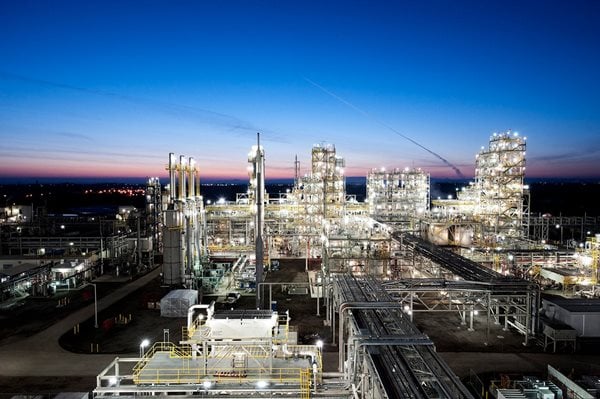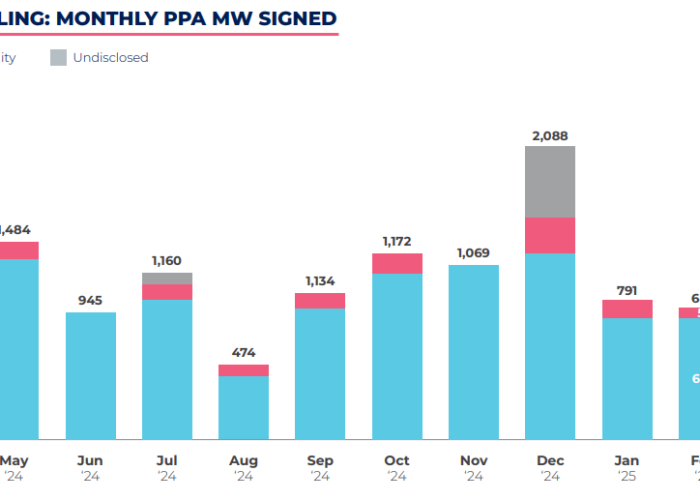
The news that REC Silicon would be shutting down polysilicon production at its US manufacturing site in Moses Lake, Washington was an unpleasant New Years’ gift for much of the solar industry.
The only established solar-grade polysilicon facility in the US had been a beacon of hope for those looking Westwards for a diversified upstream solar supply chain. It had also formed the first link in what was being sold as an entirely US-made supply chain for modules at Qcells North America’s manufacturing facility in Georgia.
Unlock unlimited access for 12 whole months of distinctive global analysis
Photovoltaics International is now included.
- Regular insight and analysis of the industry’s biggest developments
- In-depth interviews with the industry’s leading figures
- Unlimited digital access to the PV Tech Power journal catalogue
- Unlimited digital access to the Photovoltaics International journal catalogue
- Access to more than 1,000 technical papers
- Discounts on Solar Media’s portfolio of events, in-person and virtual
Or continue reading this article for free
Since the news broke, questions have arisen among industry experts and shareholders in REC Silicon.
Inconsistent quality?
In its announcement of the shutdown, REC said it followed “efforts to improve the level of some key impurities” in its polysilicon product. The company had sent samples of its product to China for testing, and “was unsuccessful in its attempts to fully rectify the issues and ultimately received an unsuccessful qualification test”.
As a result, its US customer, Hanwha Qcells, terminated its supply contract as it was “not able to wait any longer for delivery of product that consistently meets the requirements”.
In response to questions from PV Tech, Qcells issued a statement saying its operations “will not be significantly impacted. Qcells’ parent company, Hanwha Solutions, has signed a long-term agreement for polysilicon from OCI, a leading South Korean green energy company which uses hydropower to produce its product in Malaysia.”
However, some industry members questioned the claims of low product quality. A technical expert in the polysilicon industry with previous knowledge of operations at REC Silicon’s US facilities told us they were “very sceptical about the claims of Moses Lake purity being a problem”.
Polysilicon market analyst Johannes Bernreuter also told PV Tech of his initial “suspicions” about the product quality claims and the testing process. He referenced a September announcement from REC Silicon which said that “all impurities have now been reduced to levels which are acceptable to our customer, and we have an agreement in principle to modify a specification subject to a final evaluation and qualification test, as is typical in the industry after such a modification”.
“That is a stark contrast to the negative qualification test in China,” Bernreuter told us. “My suspicion came from two facts: that the test was made in China and that the material stayed at Chinese customs for such a long time.”
According to information shared by a group of REC shareholders, the silicon material being tested was delayed at customs in an “unspecified country” in October, before being released in November. The same source claims that the location of the Chinese test was chosen by REC’s customer, Hanwha Qcells. Given the hostile trade relations between China and the US, particularly over energy technologies, this could seem an unusual decision.
However, suspicions aside, Bernreuter points out that the Moses Lake facility was shut down in 2019 and reopened in 2024.
“That’s four and a half years of dormant, mothballed equipment”, he says. “How far the problem is due to this circumstance or the post-processing equipment – which was certainly new and necessary to get higher quality [polysilicon] for n-type solar cells – I cannot say.”
REC Silicon previously established a joint venture (JV) in China – TianHong REC Silicon Materials – which produces high-purity polysilicon. REC was the technical partner for the JV and provided its fluidised bed reactor (FBR) technology. Bernreuter voiced uncertainty over the fact that “REC was able to develop material suitable for n-type solar cells in China, but not on its home turf”.
In the week following the shutdown, Bernreuter and other industry commentators on LinkedIn cited a Facebook post by a REC Silicon employee stating that the quality of the silicon product fluctuated, which worried REC’s customer, Qcells.
“I think that’s the most plausible piece of information,” Bernreuter said, clarifying his position, “because as a wafer producer, you don’t want to have varying quality of feedstock material. My suspicion is that Hanwha was already uneasy about the quality of the material…and it looks like they prepared a reason for getting out of the silicon supply contract. But I cannot prove that, it’s the impression from the outside.”
When we put Bernreuter’s claim to Hanwha, the company said: “Upon learning in mid-December that REC Silicons’ polysilicon failed quality tests, both companies agreed to cancel their long-term supply agreement. On December 30th, REC Silicon officially announced the closure of its polysilicon production in Moses Lake, Washington.”
Why are there questions over Hanwha?
Korean conglomerate Hanwha Solutions is the majority shareholder in both Qcells and REC Silicon, which means it was sitting on both sides of the table in the Qcells/REC supply deal.
In October 2022, former Hanwha and Qcells executive Jeong Ryul Yun was appointed CFO of REC Silicon. The company’s chief strategy officer is also formerly of Hanwha Solutions and two of its board members are currently in situ at Hanwha Aerospace.
Since the shutdown was announced in the first days of January, a group of minority shareholders in REC Silicon have founded a movement to demand an Extraordinary General Meeting (EGM) and raised questions over Hanwha’s disclosures to REC shareholders.
The shareholders’ concerns are based on what they call “asymmetric access to information between Hanwha and minority shareholders,” particularly over events in 2024, when the supply deal with Qcells was signed, and the product quality testing took place.
A statement on their website reads: “The sequence of events [in 2024] appears to be a ‘black box,’ where we as shareholders have not received adequate information or answers to our inquiries to investor relations, management, or during quarterly presentations.”
Just days after the Moses Lake contract with REC Silicon was abandoned, Hanwha had signed a polysilicon supply agreement with OCI Holdings for product manufactured in Malaysia.
Following news of the deal, OCI’s stock price rose by 7%.
Ultimately, the shareholder group aims to prevent “undervalued takeover bids” for REC’s remaining business (which it said will produce silane gases) and “fire sales of assets”.
In response to the claims made by minority shareholders, Hanwha Solutions told PV Tech Premium: “Although it is true that Hanwha Solutions Corporation holds a stake in REC, the latter functions as a supplier, not a subsidiary or an affiliate. As a result, we have not been involved in its internal issues.”
What about the polysilicon market?
If the REC Silicon shutdown was a technology issue, for Bernreuter, it says little about the wider prospects for the US polysilicon market.
Polysilicon prices have tumbled over the last year, but as global capacity is concentrated in China, the price shocks have largely remained there. In a discussion on LinkedIn, Bernreuter said that the US Uyghur Forced Labor Prevention Act (UFLPA) means that any polysilicon entering the US must be non-Chinese and that non-Chinese product is trading at around US$20/kg. That would not make REC’s product particularly unattractive.
So what is going on beyond REC Silicon?
There are some plans for US solar-grade polysilicon production; Hemlock Semiconductor recently secured funding under the government’s CHIPS Act to expand its capacity, some of which Bernreuter says is rumoured to be for the solar industry, and lesser-known Highland Materials is reportedly investing in a poly plant in Tennessee.
“The risk [for the US] is that Chinese investors are now going abroad to establish new capacity outside China,” Brenreuter tells us. “One example in Oman is very close to opening a new facility – it will definitely happen this year.”
United Solar Holding broke ground on a 100,000 tonne polysilicon production facility in Oman last March. The company’s founder and one of its principal investors, Longgen Zhang, is the former CEO of major Chinese polysilicon company Daqo New Energy.
“Another Chinese player, Qinghai Lihao, has announced a memorandum of understanding with a company in Angola,” Bernreuter continues. “I’m not sure if that project will come to fruition, but it shows that Chinese investors are looking for new polysilicon production capacity outside of China.”
Combined with the upcoming European forced labour ban, which may impose limits on polysilicon products coming from China into the EU, “means in effect that the price of non-Chinese polysilicon—in the sense that it’s produced outside of China—will sink”, he says.
“That’s probably the risk for potential investors in new polysilicon capacity in the US.”







